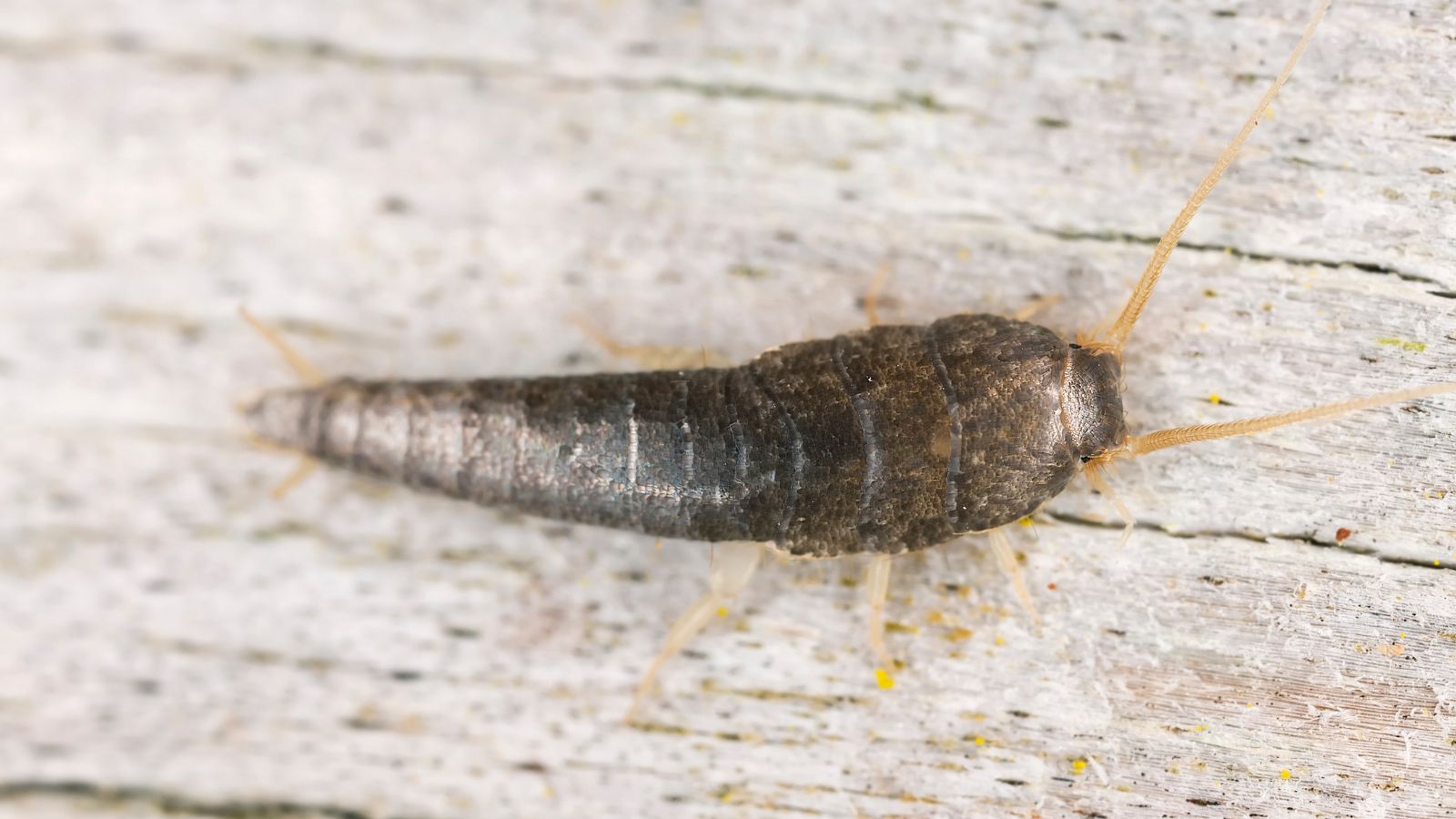How to get rid of silverfish (for good): pest control experts share this simple 5-step method
From spraying lavender essential oils to using a dehumidifier, there are various ways get rid of these pests


A silverfish is a most unwelcome visitor when we are reclining in a hot bath or simply visiting the bathroom, but the good news is they are relatively easy to get rid of.
Areas that have had particularly wet weather recently, such as San Francisco, have seen an increase in these common pests, which enjoy the dark and damp conditions of our basements, bathrooms and attics.
Once you've spotted signs of a silverfish infestation, these are five steps to eradicate them, preventing damage to items like books and clothing.
How to get rid of silverfish quickly
Much like with getting rid of mice, if you see one, there are probably more of these little creatures knocking around, so it's a good idea to take measures to remove them as soon as you spot one. 'It is important to know that they don't like the light or being out in the open, so if you see one you can assume there is a much bigger problem hiding somewhere in the house,' says Matt Smith, a pest control professional.
Outside, these creatures tend to live under tree bark, preferring dark and damp areas. They are nocturnal and active throughout the year, and make their way into our homes through crevices and pipes.
Home organizing and cleaning will go a long way in preventing them, but here are a handful of options to try right away.
1. Use silverfish baits and sprays
'The fastest way, we have found, to get rid of silverfish is to use baits along with sprays,' shares pest control professional Matt Smith of Green Pest Management. 'The bait we use contains Borax, along with a spray that the silverfish are known to frequent. Using this combination cuts down the population very quickly.'
So if you want to get rid of them as soon as possible, pick up baits, at Amazon and silverfish sprays at Walmart and use both. Sprinkling a small amount of Borax – or diatomaceous earth, at Walmart – in the affected area will also help.

Matt Smith has been working in the pest control industry for 14 years. He started Green Pest Management, Delaware-based pest control company, nine years ago. With his background and experience he is knowledgeable about a variety of pests, pest activity, and ways of dealing with infestations.
2. Deter with lavender

If you'd rather try a natural remedy first, add lavender essential oils, at Amazon into cleaning sprays, or dab onto cotton wool and place in the area you have seen silverfish coming from.
You could also use lavender sachets, but this may be less practical in moist areas. These pests also dislike citrus scents and cedar, so lemon juice and cedar oil are two other good, natural options with the added benefit of making your home smell nice.
3. Use a dehumidifier
The best dehumidifiers on the market are not only brilliant for reducing mold and mildew, but they will also deter silverfish. 'Another way to prevent these pests is to have a dehumidifier. Silverfish need moisture – they love damp dark areas, and they thrive in humid parts of the country,' says Matt Smith.
4. Keep the area clean

Silverfish are fairly common pests so there is no judgment here, but following everyday cleaning tips in your bathroom, basement or attic will prevent them from coming back. Paulo Filho, a cleaning professional and owner of Celestial Cleaning Service says that regular cleaning will significantly reduce the likelihood of a silverfish infestation in your home.
'If the problem persists or becomes severe, it's best to consult a professional pest control service for complete eradication,' he says.
5. Keep rooms well-ventilated

Another way to deter these bristletails is to keep the space well-ventilated, opening windows and letting natural light in. Leave the bathroom door or window open after using the shower or bath to encourage airflow, so you don't have to take measures to get rid of black mold build-up caused by damp conditions later down the line. Avoid leaving damp towels around in areas where they will not get dry.
Other preventative measures include fixing leaks and generally keeping rooms free of clutter.
FAQs
Are silverfish harmful?
If you see a silverfish in your bathroom, you needn't worry about them hurting you – they don't bite or sting. But like any living being, they do poop, and if they're given free run in your home, inevitably they will end up in your kitchen, where they will contaminate food left out.
Why do I have silverfish in my house?
Like most pests, silverfish come into your house looking for food and shelter. While they will eat just about anything, common foods they are attracted too are fibrous (from pasta to books to fabrics), though they will also tuck into pet food, too. They like damp, dark, undisturbed corners, which is where they will lay their eggs.
How do silverfish get into your house?
Avenues of entry include a dark, humid basement, from which they might travel up through pipes seeking starch, and moisture, and dark, humid areas, says Jim McHale, an entomologist and president and CEO of 50-year JP McHale Pest Management. Jim recommends very precise crack and crevice treatments, with a registered product, coupled with exterior barrier applications to foundations, window frames, and other potential entry points.
Will silverfish damage books or clothes?
Silverfish feed on starch, so they are attracted to books, paper, and cardboard, as well as glue and adhesives in wallpaper and book bindings.
Matt Smith recalls one customer having so many that they had eaten holes in nearly all of her clothing, she had to throw out most of her wardrobe which ended up costing a few thousand dollars.
What do silverfish eat?
'You can think of silverfish as little garbage disposals, they eat pretty much anything but they do prefer starches and fatty foods,' says pest control professional Matt Smith. 'Their tastes extend beyond food as they will eat holes in clothes, book binding, and even carpets.'
While silverfish are harmless to humans, they certainly aren't welcome in our bathrooms and other living spaces, given that they will chew through books and clothing. If you see one, it could be a sign of other issues like excess moisture, so it's well worth improving the ventilation and using a dehumidifier to prevent future problems further down the line.
Sign up to the Homes & Gardens newsletter
Design expertise in your inbox – from inspiring decorating ideas and beautiful celebrity homes to practical gardening advice and shopping round-ups.

Millie Hurst is a freelance lifestyle writer with over six years of experience in digital journalism. Having previously worked as Solved Section Editor at Homes & Gardens and Senior SEO Editor at News UK in London and New York, Millie has written for an array of homes brands including Livingetc and Real Homes and was formerly Senior Content Editor at Ideal Home. She has written and edited countless features on home organization, decluttering and interior design and always hopes to inspire readers with new ways to enjoy their homes. She loves to weave nature-inspired decor and nods to time spent in Italy into her own home.
-
 5 surprising but brilliant ways to clean with old socks – from perfectly buffing stainless steel to deterring pests naturally and more
5 surprising but brilliant ways to clean with old socks – from perfectly buffing stainless steel to deterring pests naturally and moreTackle dust in tricky corners, clean your mirrors and even banish bad odors with those rogue single socks
By Andy van Terheyden Published
-
 How to grow astilbe – expert advice on cultivating this shade-tolerant flowering perennial
How to grow astilbe – expert advice on cultivating this shade-tolerant flowering perennialShade-tolerant and pest-resistant - astilbe are hardy and tough perennials that can thrive in many settings
By Ellen Wells Published